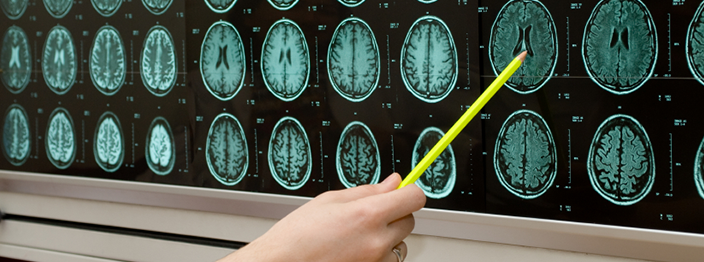What is an MRI?
Over the past decade, magnetic resonance imaging (MRI) has become one of the standard tools used to assess people with multiple sclerosis (MS). These images are used to confirm a diagnosis and to inform your doctor about how well you’re responding to treatment. But how do they work and what do they tell us about MS?
MRI acts like an X-ray to provide detailed pictures of the inside of the body. But instead of using radiation (like an X-ray or CT scan), MRI uses a powerful magnetic field. What this magnetic field does is re-orient the hydrogen molecules in your body, rotating them to face either up (toward your head) or down (toward your feet). The field force is very strong – about 40,000 times more powerful than the Earth’s magnetic field. More than enough magnetism to fry your computer or blank out your credit cards. That’s why you have to tell the technician in advance if there is any metal in your body, or even if you have any tattoos (the inks have metal in them).
After the axis of the hydrogen molecules is changed, they gradually realign to their normal positioning (called dephasing). The rate of dephasing differs depending on the amount of water in the tissue – more slowly in watery soft tissues and more rapidly in less watery or fatty tissues (such as bone or cartilage). These differences in dephasing create a contrast – not unlike the contrast in a TV set – which the MRI analyses. The MRI can provide images in two or three dimensions (2D or 3D) and is particularly useful to view soft tissues, such as the brain, which are poorly visualized with X-rays.
The most common types of MRI scans are called T2-weighted and T1-weighted scans. For T2 scans, areas with more water content appear as “hot spots” or flares (called hyperintense), which indicate areas of inflammation or tissue loss. T1 scans can differentiate water and fat molecules, which indicate areas of tissue damage. Darker areas (called hypointense lesions) indicate areas of tissue loss (called “black holes”). T1 scans can be enhanced by injecting an agent called gadolinium (which is not radioactive), with enhancing lesions indicating an area of inflammation.
MS shows a distinctive pattern of “hot spots” (or lesions) on MRI compared to other diseases, which helps to confirm the diagnosis. This pattern also differs from what is seen with PML, a brain inflammatory disease that is a rare complication of natalizumab treatment.
The size, location and overall burden of MRI lesions help your doctor assess the extent and severity of your MS. During the course of MS these lesions will change: some will disappear as the brain heals while others may evolve into areas of more severe tissue damage.
With the advent of MS treatments, MRI can now be used to assess therapies. However, a treatment may reduce inflammation in the brain without necessarily improving the long-term course of MS. This is the case with corticosteroids, which are often given during severe relapses. They get symptoms back under control and will reduce MRI flare-ups, but they do not appear to provide any long-term benefit.
So MRI can be thought of as an indicator of treatment failure rather than treatment success: if lesions are no better (or worse) after starting a treatment, this may mean that you aren’t responding as well as possible and perhaps another treatment should be considered.
MRIs are typically ordered after a tentative diagnosis of multiple sclerosis has been made. Thereafter, MRIs are often not performed unless your symptoms unexpectedly worsen; your symptoms appear to be caused by something other than MS; your doctor wants a baseline picture before you start treatment; or you’re on treatment and aren’t doing as well as expected. Additional MRIs will be ordered “as needed” rather than part of your routine care. This isn’t the ideal situation. An emerging standard of care is to have an MRI every year or so after starting treatment. Unfortunately, this standard isn’t always met because of the limited availability of MRI machines and the costs associated with a scan.
Share this article
Facebook Twitter pin it! Email
Related Posts
Back





